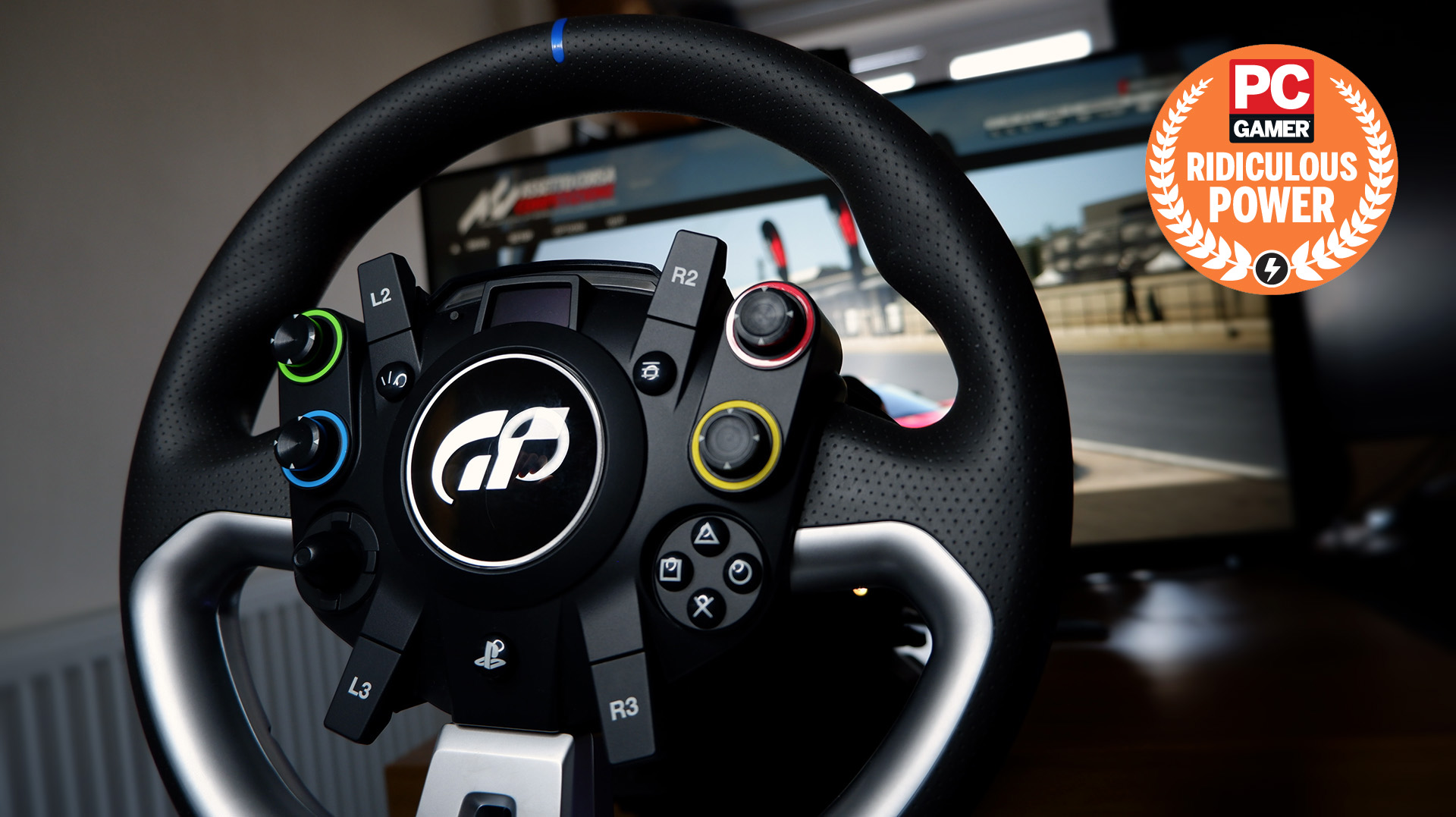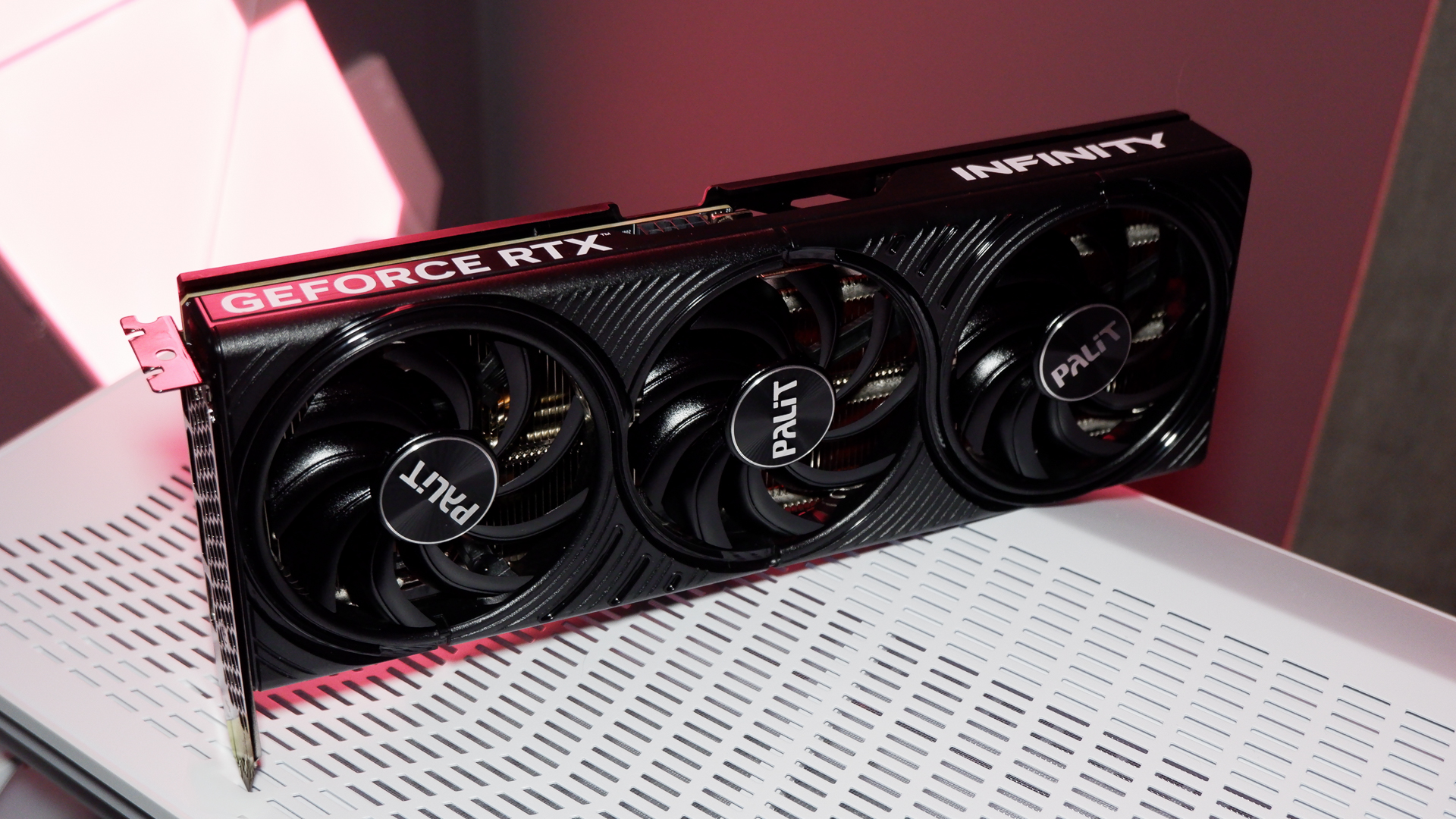Our Verdict
Whether you want to take to track immediately or begin building a competition-grade sim racing rig, the Fanatec GT DD Pro is an excellent way into the world of racing. The DD wheelbase is the highlight of the package, delivering a powerful direct-drive motor that excels at finely tuned feedback as it does fast-paced action.
For
- Powerful direct-drive force feedback
- Highly customisable
- Excellent wheel interface
- Easy profile switching
- Compact construction
Against
- No clutch pedal with cheapest bundle
- Compatibility mode required for some games
- You need to spend more to get the most out of it
PC Gamer's got your back
Most of us would love a sim racing setup with a full frame, triple monitors, and the chassis from Sebastian Vettel's 2021 Aston Martin F1 challenger. But unless you're loaded beyond belief, it can be difficult to realise that dream. It is possible to piece together a sim racing rig, however, one component at a time. To do that, you need to maximise longevity and expandability by carefully picking the best components, those that'll last you many happy miles on track.
That's where a kit like the Fanatec GT DD Pro comes in, with the starting kit at $700 / €700 / £609 including shipping. It's a fundamentally impressive core set of components from which you can build upon, to one day realise your sim rig dreams.
Despite looking like an uninteresting hunk of metal, the wheelbase is the star of the show. Offering direct-drive at a fraction of the cost of the models that preceded it, the DD wheelbase is surprisingly powerful for its price. The internal motor delivers plenty of oomph to throw the attached wheel around when you're careening into the barriers, but more importantly the granularity of the force feedback is there to keep you from doing so too often.
The feedback this wheelbase provides not only ensures you're painfully aware when you take a little too much curb, but also helps inform you of your traction throughout a corner. A fast rotation back to centre also means you can throw the wheel around and never feel like you're losing control over your steering in tight chicanes.
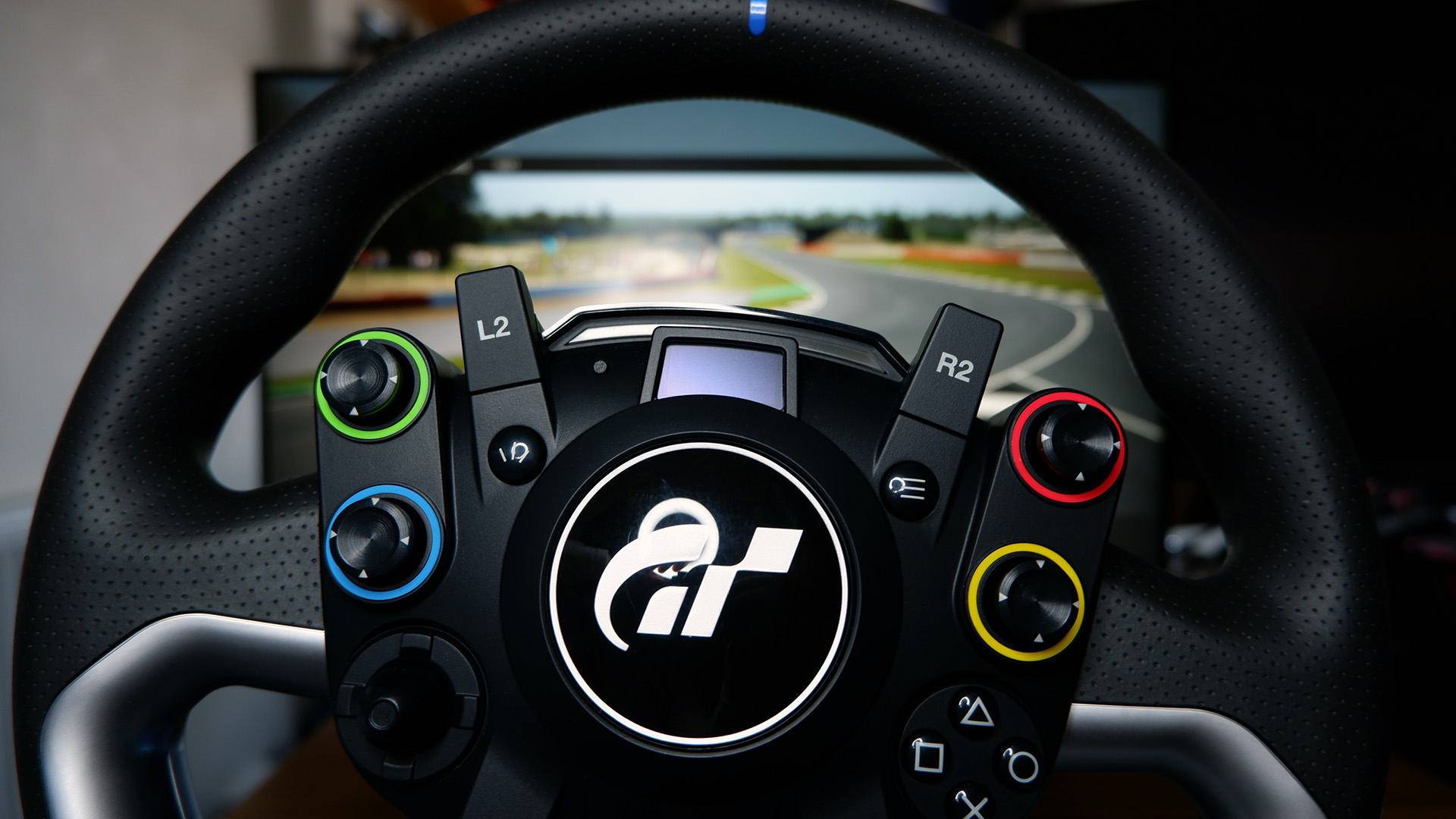
Force feedback: Direct-drive
Buttons: 38, including paddle shifters
Shifters: Paddle shifters
Customisation: Onboard and via Fanatec app
Mounting: Included table clamp, screw compatibility
Pedals: Included, two (load-cell brake optional extra)
Pedal type: Magnetic
Price: $700|€700|£609
There is a caveat to the DD wheelbase's power, however. The cheaper model I received for review uses a 90W power supply, providing just over half of the torque (5Nm) the unit is designed to deliver at full power. You'll need to spend another $180 to unlock its full potential with a 180W power supply, providing up to 8Nm torque—a pretty steep cost for a new AC adapter. Unfortunately I don't think you'll have much luck trying to plug in any old adapter, as the power connector on the DD Pro isn't a standard one.
Though this is a part of that expandability I'm talking about: you can save a little cash on the lower power version for now and upgrade down the line when you're ready. I'd still like to feel like I'm getting the most out of my racing wheel from the get-go, but if it keeps cost down enough that more users can therefore get their hands on this sort of quality direct-drive setup then I understand the approach here.
The pedals are also stripped back to basics with the budget GT DD Pro bundle, offering only accelerator and brake pedal, and lacking a dedicated clutch. Though this CSL Pedals set is Fanatec's most basic, it's still a rock-solid option nonetheless. You can also opt for a slightly pricier bundle to grab the complete three-pedal configuration by purchasing the bolt-on load-cell brake—you drop the new pedal in between your original two, using the modular foot plate to space them out, and then use the spare pedal as the clutch.
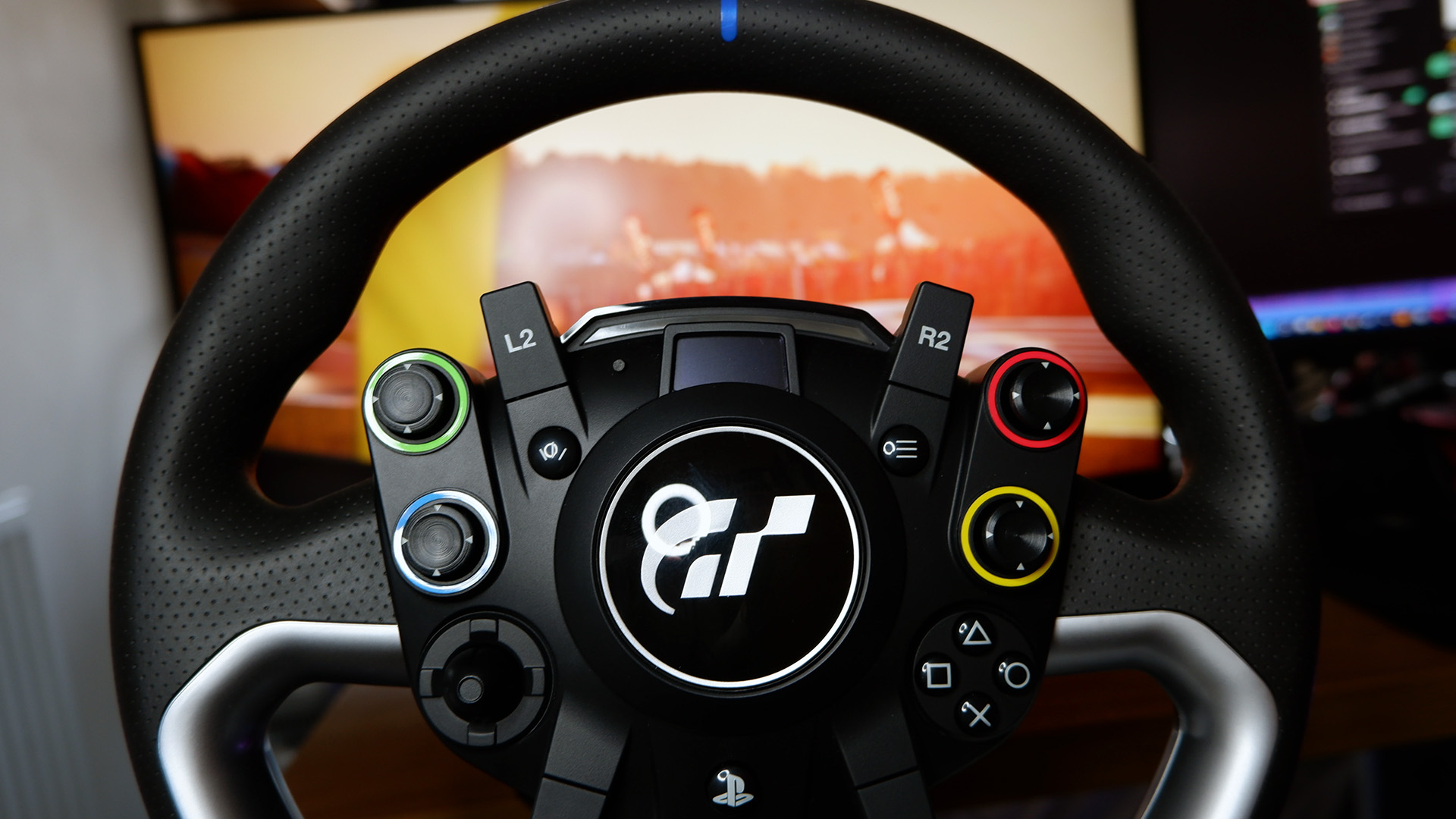
All of which sounds awfully tempting, though between a load-cell brake and the larger power supply (they're not far off the same price), I'd probably lean towards the power supply. To get both you're looking at a much higher price tag right off the bat, so perhaps best to pace yourself with upgrades or stick with what's included.
It's not like you're stuck with lacklustre pedals if you do decide to stay put. The two included with the GT DD PRO are impressive and responsive, thanks to a smooth magnetic actuation. They're easy to customise too, with many options open for adjustments thanks to a few hex screws along the base.
With the whole pedal set ditching the usual plastic construction found on cheaper models for a mostly metal alternative (only the pedal faceplates are plastic), they should last a good while. The other benefit to this construction is that the pedals are relatively heavy, which helps to keep them in place on your floor without a frame or extra support.
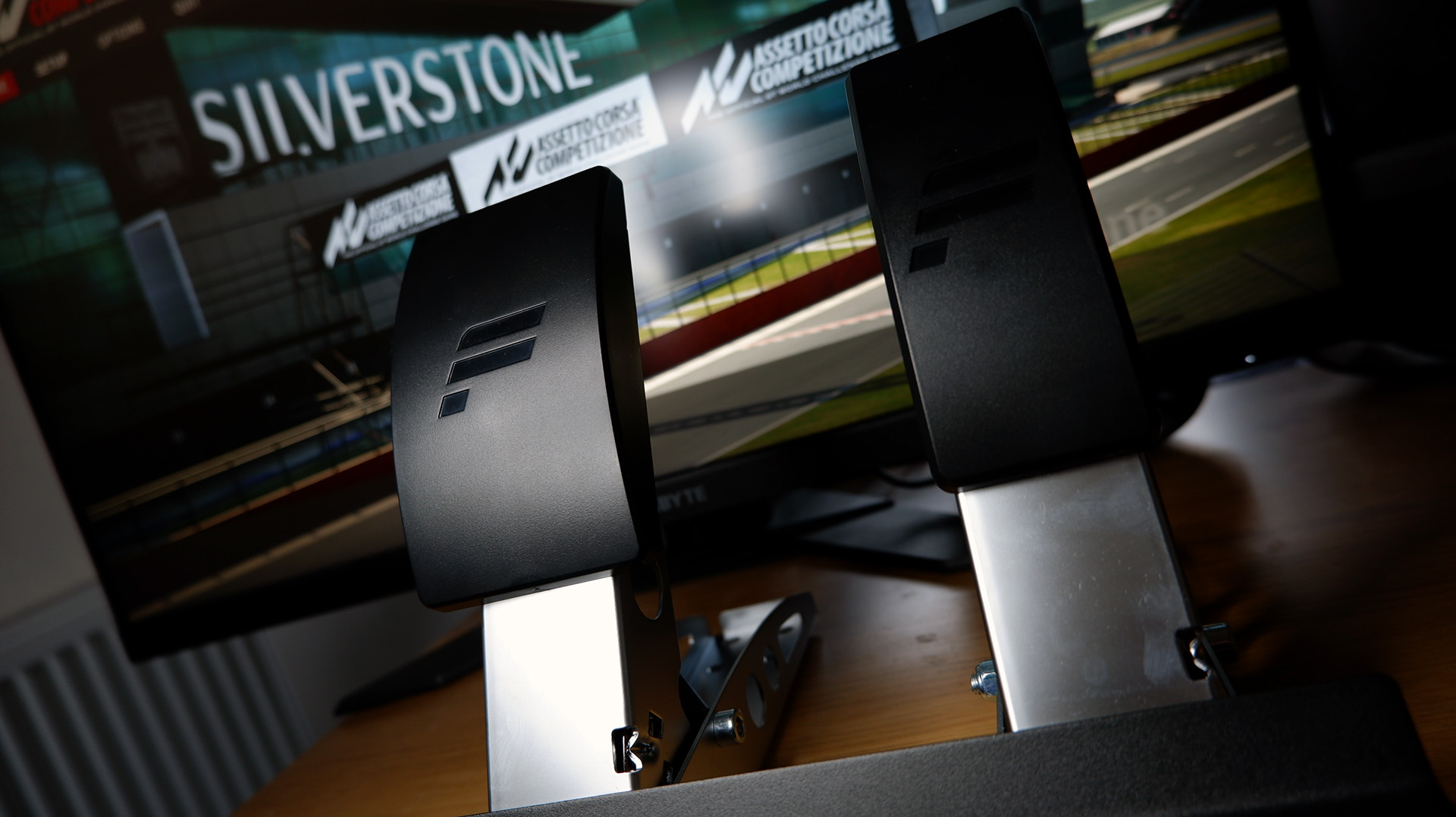
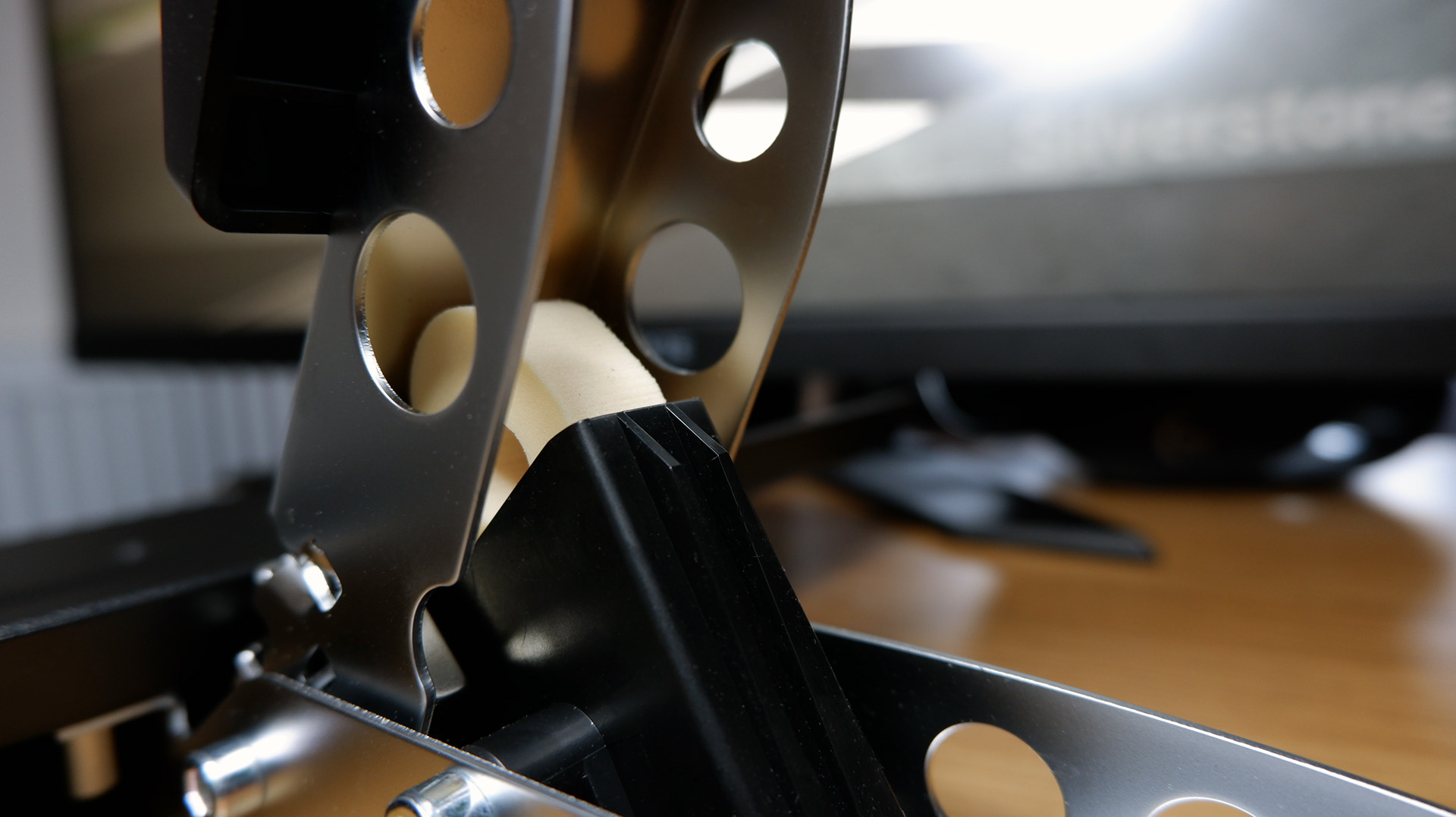
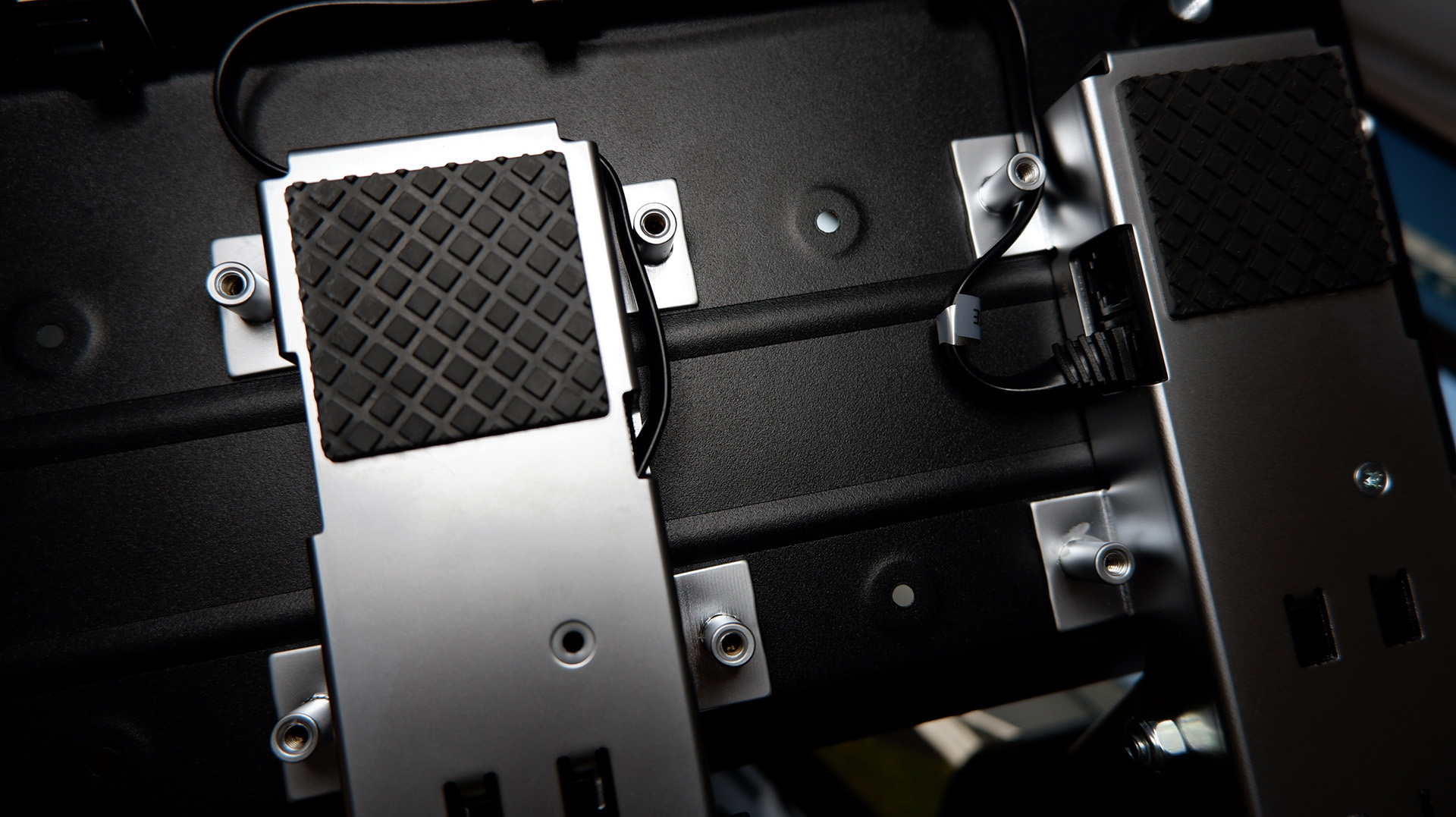
That said, under heavy braking you'll still have some movement, especially in rally games. I'm yet to find a pedal set that has no movement at all, and while that only strengthens my resolve in picking up a frame for my racing setup someday, it also means you should carefully consider where you place these pedals: be that against an immovable object or wall to prevent too much movement under braking.
Though one part of the GT DD Pro bundle I don't think is in need of any replacement or upgrade is the wheel itself. It's a high quality unit with plenty of buttons to keep even the most finicky racers happy. The included wheel fulfils all I needed it to in Assetto Corsa, and there are options to customise it further if needed, either through the Fanatec app or on the wheel itself through the onboard OLED display.
In F1 2021, a game that doesn't offer native support for this particular model, I did have to run the wheel in compatibility mode. What that means is it replicates the more popular and longstanding CSL wheel, and in doing so loses the ability to tweak some of the onboard buttons, such as the four 5-way directional sticks. You can still nail down a suitable setup in F1 2021 using the compatibility mode profile, just bear in mind that the Fanatec apps won't let you tweak the wheel's parameters digitally and you'll have to set it up via the wheel instead.
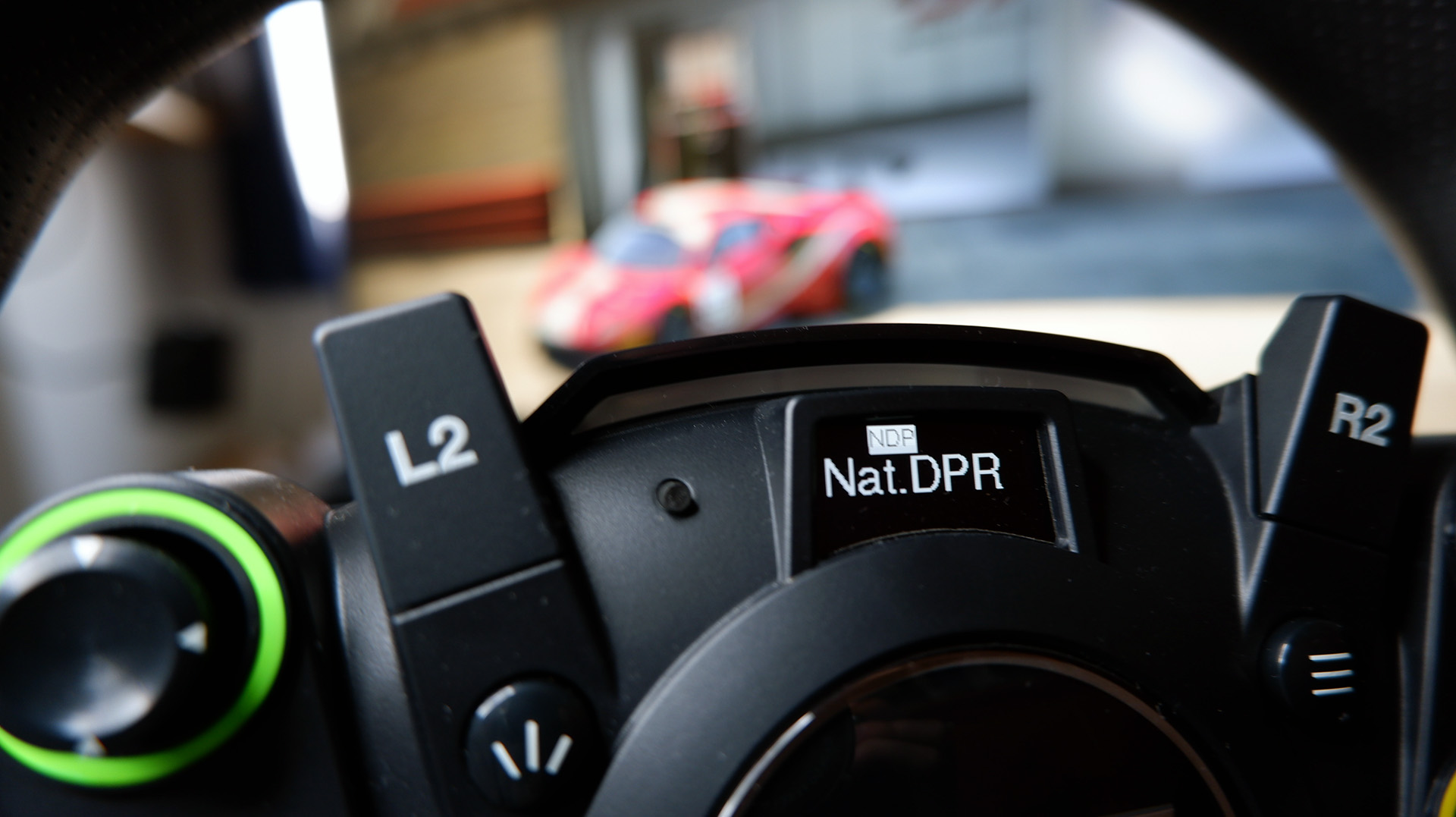
That's easy enough to do: you have multiple profile options on the wheel itself. These can be set-up one for each game and switched between with only a few button presses. You mostly only have to worry about tweaking these settings once before you're ready to go, though I found some cars in Assetto Corsa require more or less max rotation than others, and so you might need to fiddle a little more to nail a decent turning circle.
But whether you plan to build out your sim racing setup or stick to the basic package, the GT DD Pro is an excellent way to enter the sim racing game.
But when you set it up just right, the GT DD Pro sings. The finely-tuned vibration and rotation through the wheel transmits so much information from the game's engine into your hands—with the right racing game, one that has simulation-grade feedback, it's an absolute joy to throw the GT DD around the track. While technically built for Gran Turismo 7, it's no worse off on the PC across a range of sim racing and sim-light games, such as Assetto Corsa and F1 2021.
What I really enjoy about this kit is its versatility. I jumped into Forza Horizon 5 and felt no less comfortable throwing this wheel around as I did in F1 2021 with tighter force feedback settings. That's not something I've necessarily felt with cheaper models, and while that's partially down to the direct-drive technology at the heart of the GT DD Pro, it's also in how simple this wheel is to set-up for each game, even those it doesn't necessarily play nicely with.
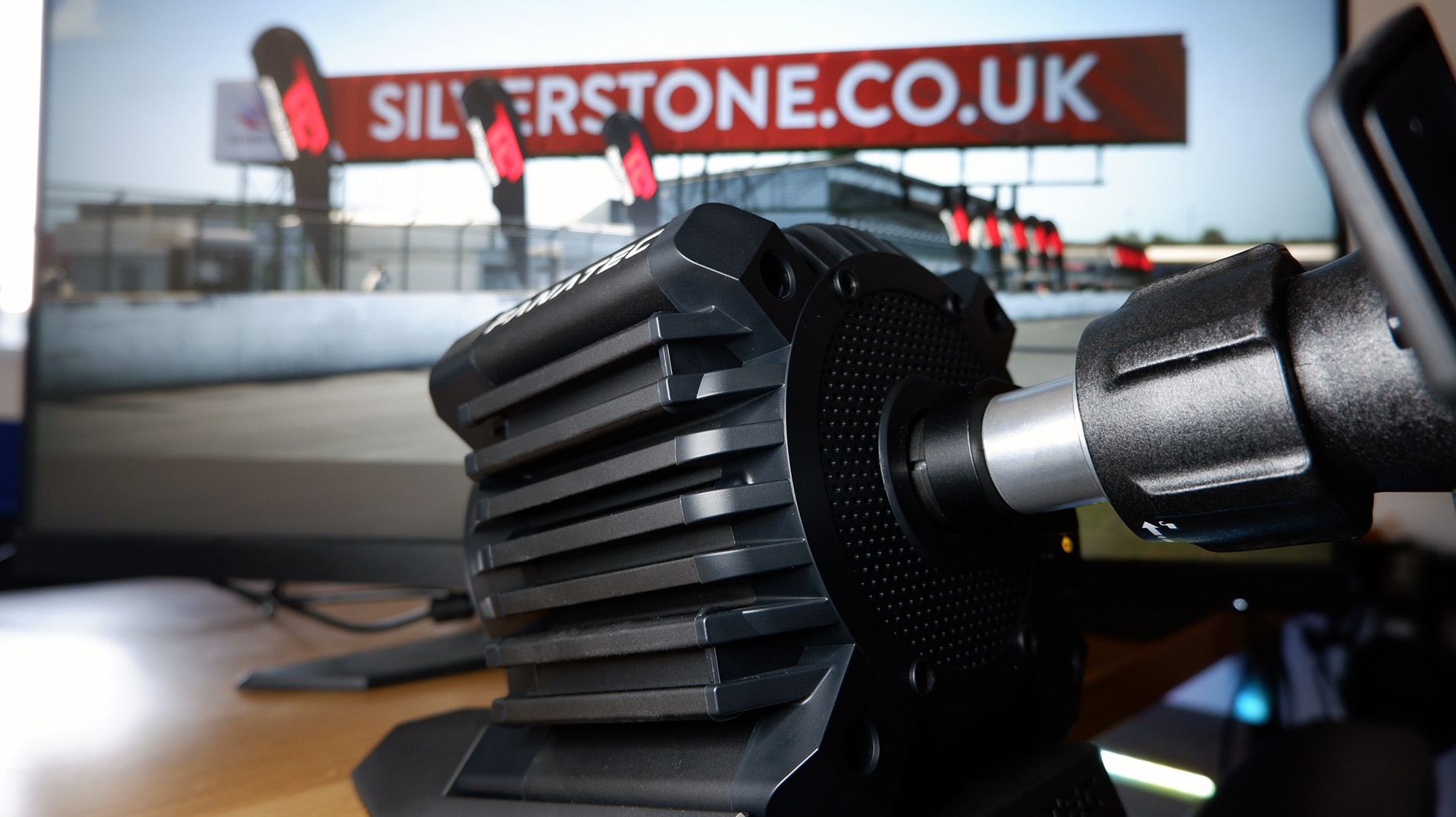
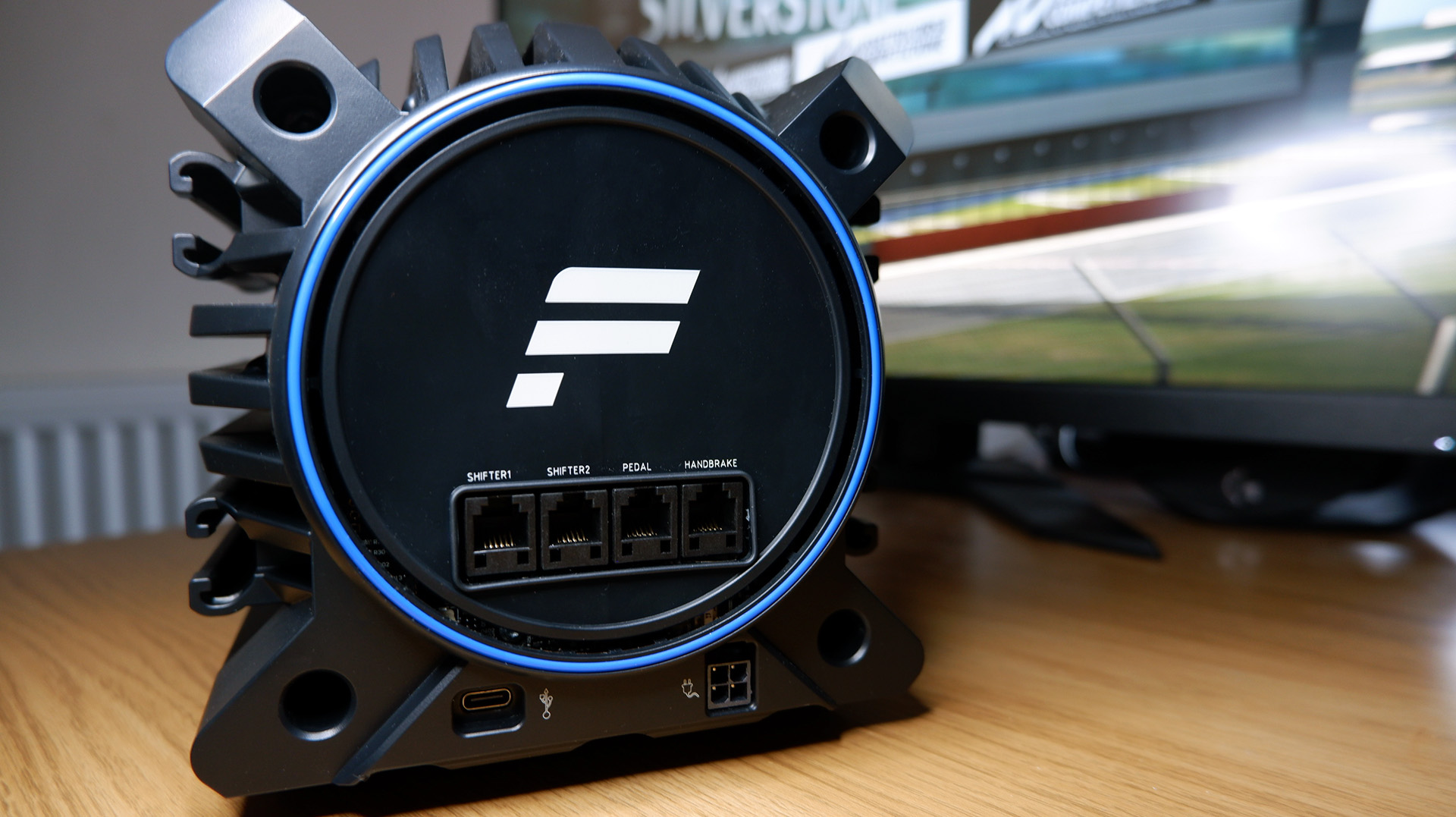
While much cheaper units, when using the Thrustmaster T248 and Logitech G923 I've to hand for comparison I immediately noticed the lack of kick. A kick I'd already grown all too familiar with too quickly with the GT DD Pro. It feels far more agile and quick to stir, making for a much more responsive driving experience. And if the promise of a significant amounts more power doesn't tempt you, the overall form and finish of the GT DD Pro should—this looks and feels much more like a car than the others.
Don't get me wrong, I have a soft spot for both of those cheaper wheels, but the GT DD Pro is by all measures a major step up in sim racing technology. The next level of racing sim experience.

Next to previous Fanatec models, such as the Fanatec CSL Elite, it is clear that Fanatec's DD base is as versatile as it is powerful. The cheapest bundle going—the wheel, twin-pedal set, and 5 Nm wheelbase—is a superb package even without any extras. It's no wonder the DD wheelbase has almost entirely replaced the older models.
The GT DD Pro's biggest catch is that it's an easy money-sink, however. The GT DD Pro 5 Nm package gets you mostly what you need, but no doubt you'll be itching for more power, more pedals, and more monitors within months.
But whether you plan to build out your sim racing setup or stick to the basic package, the GT DD Pro is an excellent way to enter the sim racing game. The DD wheelbase has an almighty power behind it, and I dare say there's never been a better time to build a racing sim with this excellent bit of kit delivering direct-drive in a compact package.
Whether you want to take to track immediately or begin building a competition-grade sim racing rig, the Fanatec GT DD Pro is an excellent way into the world of racing. The DD wheelbase is the highlight of the package, delivering a powerful direct-drive motor that excels at finely tuned feedback as it does fast-paced action.

Jacob earned his first byline writing for his own tech blog. From there, he graduated to professionally breaking things as hardware writer at PCGamesN, and would go on to run the team as hardware editor. He joined PC Gamer's top staff as senior hardware editor before becoming managing editor of the hardware team, and you'll now find him reporting on the latest developments in the technology and gaming industries and testing the newest PC components.
